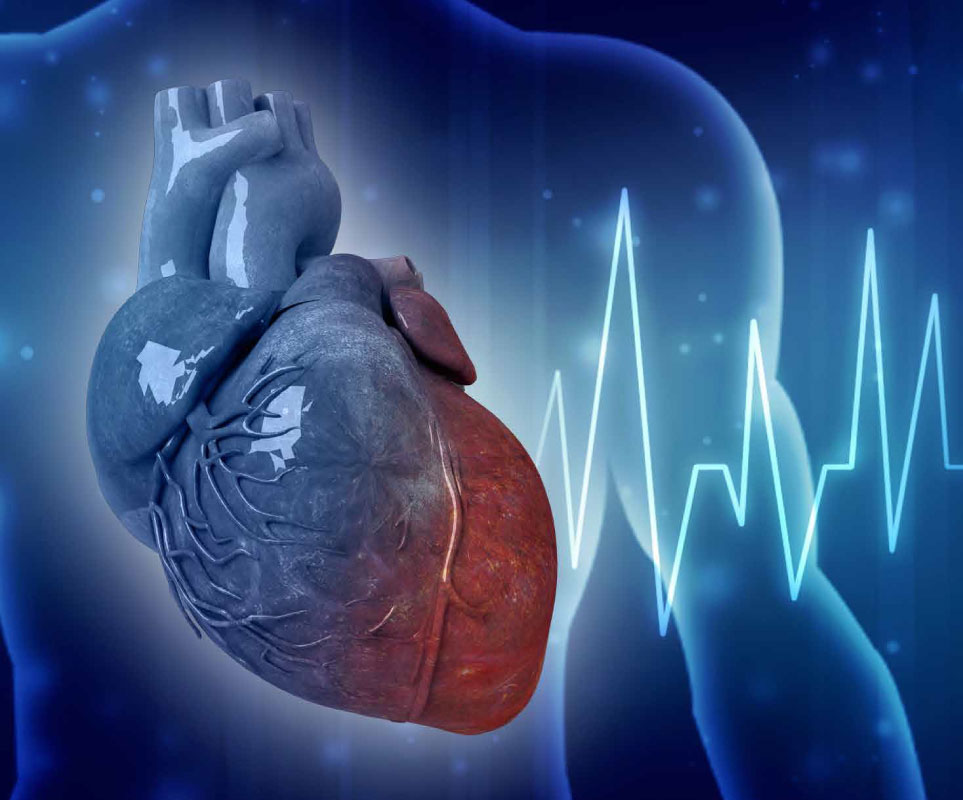General Health Tips & News
Understanding Arrhythmia: Types, Causes, Symptoms, and Treatment
By A.S. (staff writer) , published on August 29, 2023

Medicine Telehealth Health
Introduction
The human heart is a remarkable organ that pumps blood throughout the body. It beats rhythmically, creating a regular pattern of contractions and relaxations that ensures an efficient flow of oxygenated blood to all the body's tissues. However, sometimes this rhythm is disrupted, leading to a condition known as arrhythmia. In this article, we will explore the various aspects of arrhythmia, including its types, causes, symptoms, and treatment options.
What is Arrhythmia?
Arrhythmia refers to an abnormal heartbeat rhythm. Instead of the heart beating regularly and steadily, it can beat too fast (tachycardia), too slow (bradycardia), or irregularly. Arrhythmias can affect the heart's ability to pump blood effectively, potentially leading to various health problems.
Types of Arrhythmias
There are several types of arrhythmias, each with its unique characteristics:
-
Atrial Fibrillation (AFib): AFib is the most common type of arrhythmia. In AFib, the heart's upper chambers (atria) quiver instead of contracting effectively, leading to an irregular and often rapid heartbeat.
-
Bradycardia: Bradycardia is when the heart beats too slowly, typically less than 60 beats per minute. This condition can result from aging, medication side effects, or heart disease.
-
Tachycardia: Tachycardia is the opposite of bradycardia. It occurs when the heart beats too quickly, often exceeding 100 beats per minute. There are various forms of tachycardia, including ventricular tachycardia and supraventricular tachycardia (SVT).
-
Atrial Flutter: Like AFib, atrial flutter involves a rapid heartbeat in the atria. However, the rhythm in atrial flutter is typically more organized than in AFib.
-
Ventricular Fibrillation (VFib): VFib is a life-threatening arrhythmia where the heart's lower chambers (ventricles) quiver instead of pumping blood. This condition requires immediate medical attention.
-
Premature Contractions: Premature contractions, including premature atrial contractions (PACs) and premature ventricular contractions (PVCs), involve extra heartbeats that can interrupt the regular rhythm.
Causes of Arrhythmias
Arrhythmias can have various causes, including:
-
Heart Disease: Conditions like coronary artery disease, heart attacks, or heart valve disorders can damage the heart's electrical system, leading to arrhythmias.
-
High Blood Pressure: Chronic high blood pressure can strain the heart and increase the risk of arrhythmias.
-
Diabetes: Uncontrolled diabetes can affect the nerves that regulate the heart, contributing to arrhythmias.
-
Smoking and Excessive Alcohol Consumption: These habits can increase the risk of arrhythmias by damaging the heart and blood vessels.
-
Stress: Intense emotional stress or anxiety can trigger arrhythmias in some individuals.
-
Medications and Supplements: Some medications and dietary supplements can disrupt the heart's electrical activity.
-
Genetics: Inherited conditions can make some individuals more susceptible to arrhythmias.
Symptoms of Arrhythmias
Arrhythmias can manifest in various ways, and symptoms may include:
-
Palpitations: Feeling like your heart is fluttering, pounding, or racing.
-
Dizziness or Lightheadedness: Especially when standing up quickly.
-
Shortness of Breath: Difficulty breathing, especially during physical activity.
-
Chest Pain or Discomfort: Sometimes mistaken for a heart attack.
-
Fatigue: Feeling unusually tired, especially with exertion.
-
Fainting (Syncope): In severe cases, arrhythmias can lead to loss of consciousness.
Diagnosis and Treatment
If you suspect you have an arrhythmia or are experiencing symptoms, it's essential to seek medical evaluation. Diagnosis typically involves:
-
Electrocardiogram (ECG or EKG): A test that records the heart's electrical activity to detect irregularities.
-
Holter Monitor: A portable ECG device worn for an extended period to capture intermittent arrhythmias.
-
Event Monitor: Similar to a Holter monitor but used for shorter periods to capture occasional symptoms.
-
Blood Tests: To check for underlying conditions like thyroid problems or electrolyte imbalances.
Treatment options depend on the type and severity of the arrhythmia:
-
Medications: Antiarrhythmic drugs can help control abnormal heart rhythms. These include Na channel blockers, Beta blockers, and K and Ca Channel blockers. Along with these adenosine is used if uncontrolled from the above medication.
-
Cardioversion: Electrical cardioversion uses a controlled electric shock to restore a normal rhythm.
-
Catheter Ablation: A minimally invasive procedure where a catheter is used to destroy abnormal heart tissue causing arrhythmias.
-
Implantable Devices: Devices like pacemakers and implantable cardioverter-defibrillators (ICDs) can help regulate heart rhythm and provide life-saving shocks when needed.
-
Lifestyle Changes: Quitting smoking, limiting alcohol and caffeine, managing stress, and maintaining a healthy weight can help manage and prevent arrhythmias.
Conclusion
Arrhythmias can range from benign to life-threatening and require prompt evaluation and management. If you suspect you have an arrhythmia or are experiencing symptoms, consult a healthcare professional for a proper diagnosis and personalized treatment plan. With the right care, many people with arrhythmias can lead normal, healthy lives.
References
Arrhythmia. (2021, September 14). Retrieved from NHS: https://www.nhs.uk/conditions/arrhythmia/
What is an Arrhythmia? (2022, November 11). Retrieved from American Heart Association: https://www.heart.org/en/health-topics/arrhythmia/about-arrhythmia
Find articles related to: Medicine Telehealth Health
More articles about General Health Tips & News
Back to the Health Tips Index




